Want to know how you can get free trial credits for OpenAI?
OpenAI offers various tools and products to create powerful AI applications.
One of their most popular tools is ChatGPT. This is a language model that answers queries, generates developing codes, and more.
If you are interested in testing out their products, OpenAI offers free trial credits.
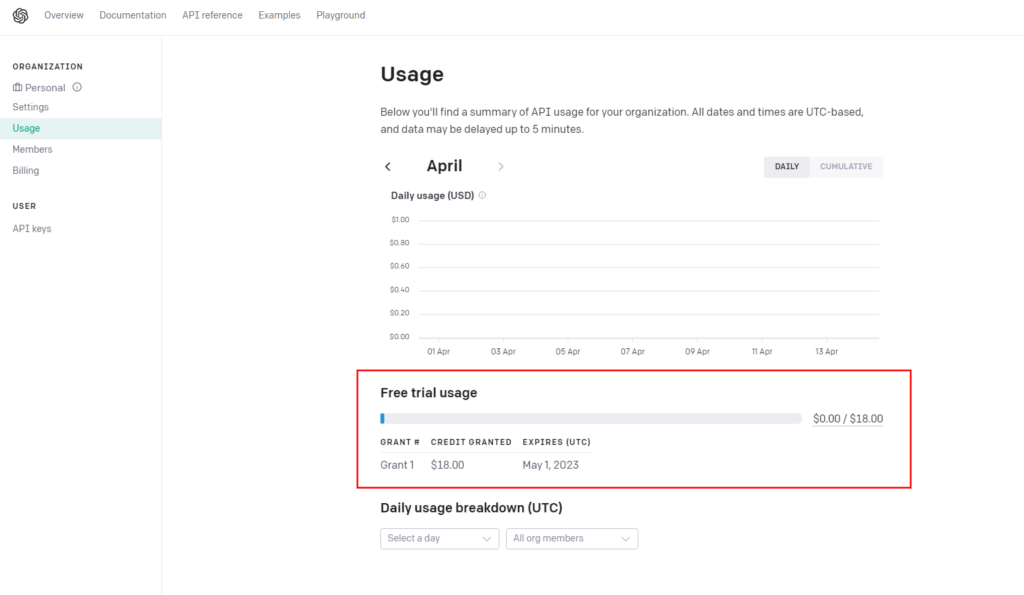
These free credits should allow you to test OpenAI’s technology. From there, you can assess if their tools can help you with your projects.
However, users have been struggling to get free trial credits on OpenAI.
To help out, we have created an in-depth guide on how to get free trial credits for OpenAI.
Let’s get started!
Create An Account
The first thing you need to do to secure free trial credits for OpenAI is to create an account. If you haven’t done so, you can follow the steps below to guide you through the process.
Note
Make sure that you haven’t created any OpenAI account in the past using your email and phone number. This can result in the platform not granting you free trial credits.
Here’s how you can create an OpenAI account:
- First, go to OpenAI’s website.
- From there, click on Get Started to start the signup process.
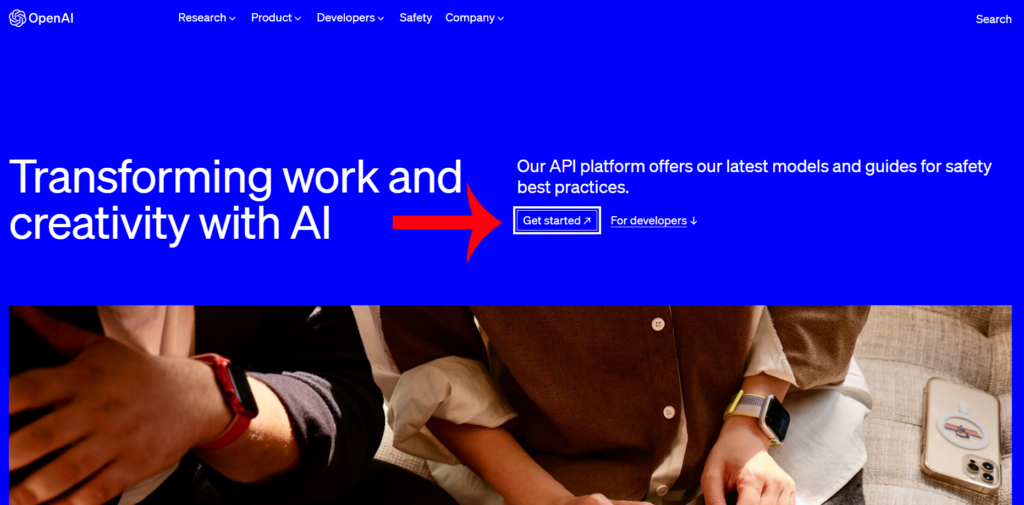
- Now, you’ll be asked to provide some basic information like your name, email address, and password. Follow the prompts to continue.
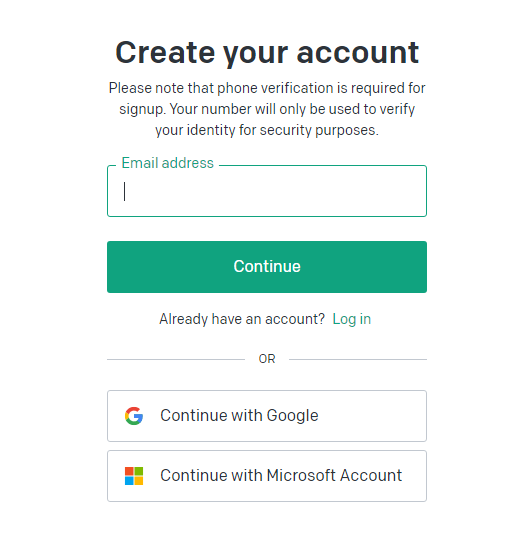
After signing up, you’ll be taken to your account dashboard. From there, you can explore the different products OpenAI is offering.
You can also check your account settings and manage your subscription from this page.
Getting Trial Credits
OpenAI automatically grants you $18 credits after completing the signup process. This means that you can immediately start testing OpenAI’s products once you have an account.
Here’s where you can use your trial credits:
GPT-3
This is OpenAI’s language model that is available through an API and is priced based on usage. GPT-3 pricing starts at $0.008 per token for the standard plan, with a minimum charge of $100 a month.
You can also opt for an advanced plan, offering extra features and faster response times. It costs $0.02 per token and a minimum charge of $500 per month.
Fine-Tuning Models
You can also create custom models by fine-tuning base models with your training data. If you fine-tune a model, you will only be charged for the tokens you use in requests to that model.
| Model | Training | Usage |
| Ada | $0.0004 / 1K tokens | $0.0016 / 1K tokens |
| Babbage | $0.0006 / 1K tokens | $0.0024 / 1K tokens |
| Curie | $0.0030 / 1K tokens | $0.0120 / 1K tokens |
| Davinci | $0.0300 / 1K tokens | $0.1200 / 1K tokens |
GPT-4
This is a similar language model to GPT-3 but it produces safer and more useful responses. GPT-4 can solve problems with greater accuracy with its improved problem-solving skills.
| Model | Prompt | Completion |
| 8K context | $0.03 / 1K tokens | $0.06 / 1K tokens |
| 32K context | $0.06 / 1K tokens | $0.12 / 1K tokens |
Keep in mind that the prices mentioned above are subject to change. OpenAI may also introduce new products and plans in the future.
Monitoring Token Usage
OpenAI provides a dashboard on your account, so you don’t have to track your usage manually.
This page will show you how many tokens you have used during the current billing cycle. You can also see past billing cycles on the dashboard as well as your daily and cumulative usage.
Here’s how you can view the tracking dashboard:
- Login to your OpenAI account.
- Click on your Profile in the upper right corner and select Manage Account.
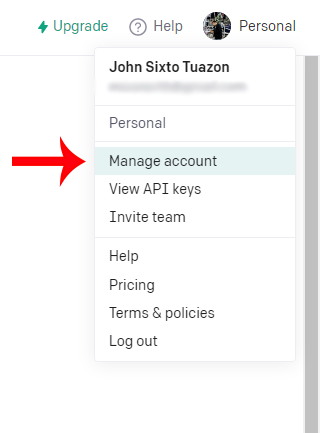
- Go to the Usage tab.
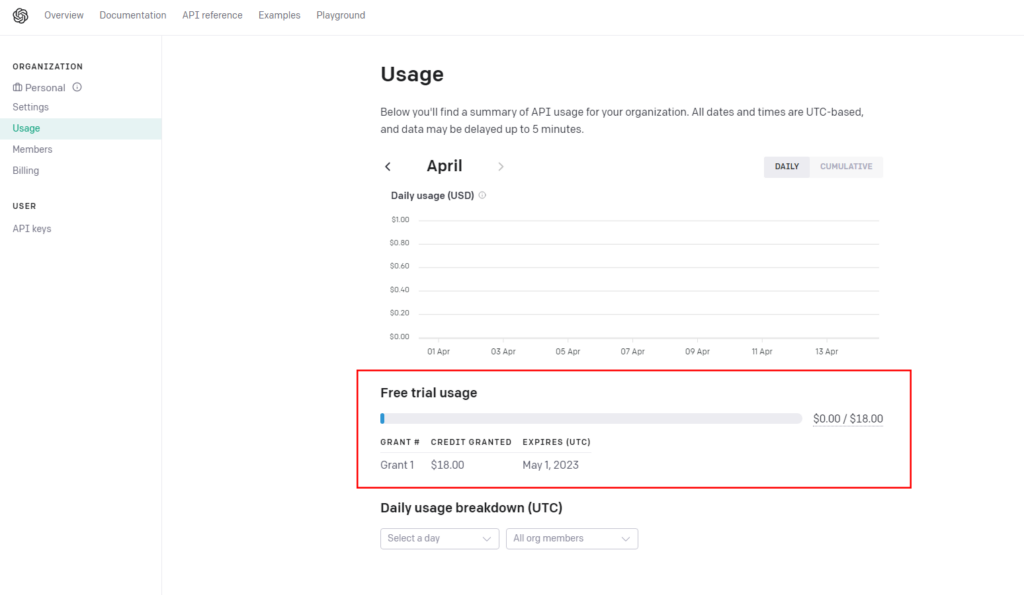
Your free trial credits should be under the normal usage dashboard. It shows how much credit was granted to your account and when it will expire.
Usage Limits
In addition, you can also set a usage hard limit in your account’s billing configuration. When this limit is reached, the model will stop serving your requests.
You can also set up a soft limit that will send you email alerts once you pass a usage threshold.
- Access your OpenAI account using any browser.
- Go to your Profile by clicking on your icon in the upper right corner.

- Click on Manage Account and access the Billing tab.
- From there, go to Usage Limits.
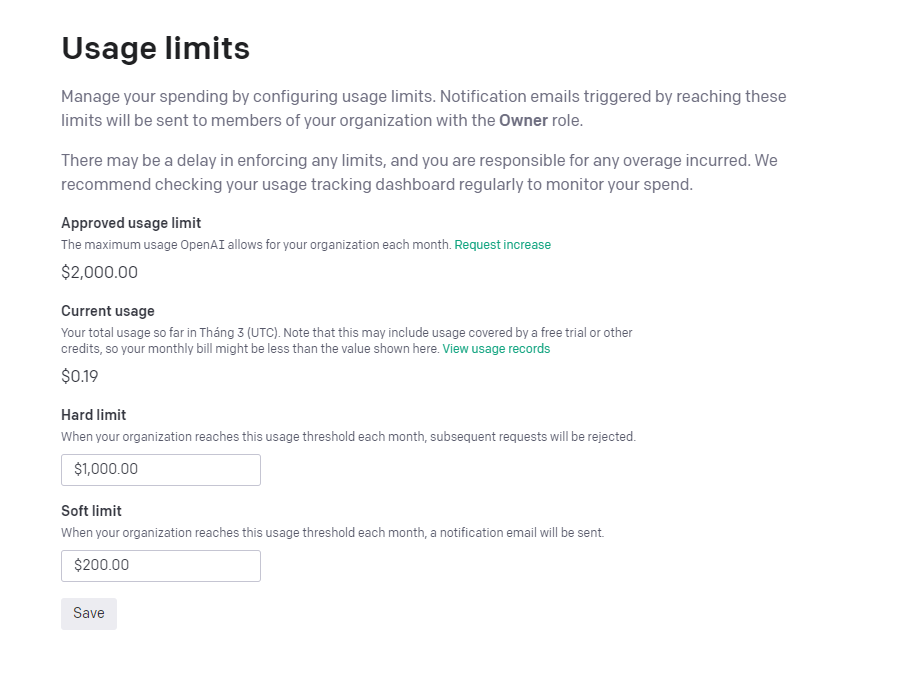
Keep in mind that there might be some delay in enforcing your usage limit.
Due to this, you still need to be responsible for your usage. We suggest checking the dashboard regularly to keep track of how much you spend.
Frequently Asked Questions (FAQs)
Why am I not getting free trial credits?
If you are not getting free trial credits, it’s possible that you are signing up for a second account. You can’t keep on creating new accounts to get free credits on the platform.
OpenAI assigns free credits based on your phone number and not your email address.
What are Tokens?
Tokens are basically pieces of words that you use for language processing. For instance, one token is around 4 characters or 0.75 words in English.
You can use OpenAI’s Tokenizer tool to learn more about how Tokens work and measure your usage.
Which model should I use?
Davinci (text-DaVinci-003) is the most capable model of OpenAI. However, there are other models that can also perform extremely well at a cheaper cost.
For instance, Curie is another model that can perform similar tasks as Davinci. However, it is faster and only costs 1/10th of Davinici’s price.
Does Playground usage count against my quota?
Yes. As it turns out, OpenAI treats any Playground usage on your account as regular API usage.
That brings us to the end of our guide on how to get free trial credits for OpenAI. If you have questions, don’t hesitate to leave a comment below, and we’ll do our best to answer them.





